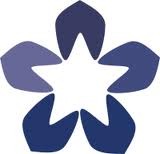The Programming Historian 2: Getting Started with Topic Modeling and MALLET
(View Complete Item Description)In this lesson you will first learn what topic modeling is and why you might want to employ it in your research. You will then learn how to install and work with the MALLET natural language processing toolkit to do so. MALLET involves modifying an environment variable (essentially, setting up a short-cut so that your computer always knows where to find the MALLET program) and working with the command line (ie, by typing in commands manually, rather than clicking on icons or menus). We will run the topic modeller on some example files, and look at the kinds of outputs that MALLET installed. This will give us a good idea of how it can be used on a corpus of texts to identify topics found in the documents without reading them individually.
Material Type: Diagram/Illustration




















